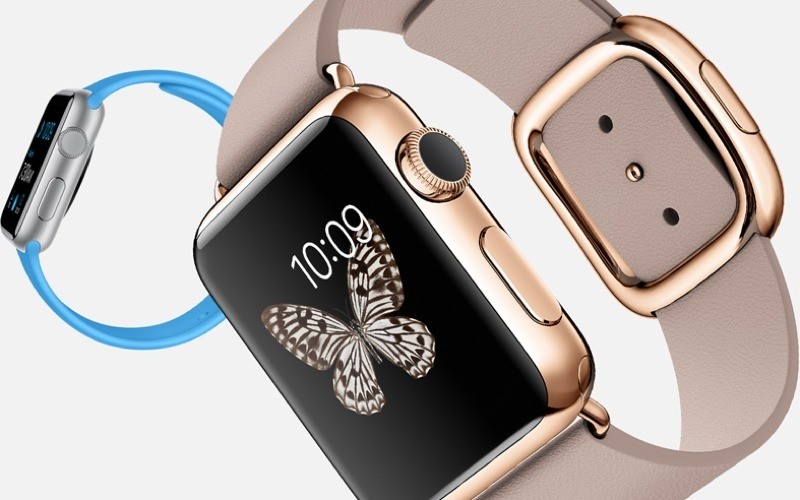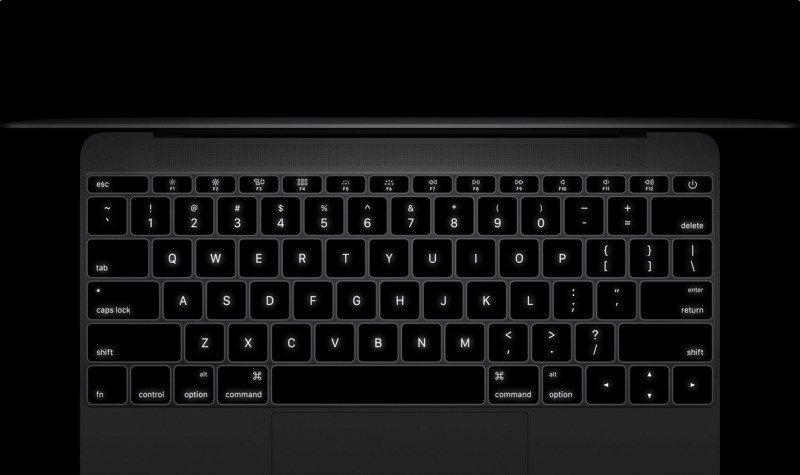Yesterday's Apple event at the familiar surroundings of Yerba Buena Center in San Francisco offered a number of surprises, including at least one that was surprising because of its lack of surprise. Of course, there were also a lot of things that many people expected, like inspiring a great deal of gear lust towards a new gold device. But I'm getting ahead of myself.
First things first. The real hit of the event? A new PC. For a company that seemed to write off the importance of traditional personal computers a few years back, there was something supremely poetic about the fact that at the first Apple event of 2015, more people walked away talking about wanting a new notebook than they did a new watch. Yes, the new MacBook was the star of the occasion, and even Apple itself seemed to know this based on how much time was spent describing every aspect of it in great detail.
I don't have an official breakdown, but my guess is at least as much time was spent at the event on the MacBook as was on the new Apple Watch---and maybe even more. My how things have changed.
Oh, and the gold device that inspired the most lust at the event? Why, that was the new gold MacBook. Everyone there, it seemed, wanted one. Now, as some have pointed out, Apple's decision to use Intel's new Core M in this new 2-pound device will likely lead to performance disappointments versus some existing MacBooks. The super sleek design of Apple's latest computer, however, clearly showed that there are still innovations to be made in the stodgy old world of PCs. Plus, Apple's decision to use the new USB-C connector, while frustrating for some, was a pleasant surprise given Apple's frequent history of disregarding other common PC industry standards.
The device that most people expected to be somewhat of a surprise---at least in terms of new capabilities---was, of course, the Apple Watch. Other than final pricing and availability dates, however, the most surprising aspect of the Apple Watch portion of the event was actually the complete lack of new features. I, like many others, expected Apple to unveil some kind of new details or new types of applications for the Watch. The story Apple told yesterday, however, was almost identical to what they told us back in September. For the record, I don't think that this consistency was a good thing.
The general consensus after last September's event was that Apple needed to provide more compelling details and explanations of what the Watch was going to be able to do before we could start getting a sense of it. Well, given that they really didn't tell us anything new means either there wasn't anything they could add, or they couldn't come up with any new ways to tell us. Either way, that was definitely surprising---and disappointing. To me, this speaks clearly to the challenges that smart watches face as a category, and that the Apple Watch will also face.

One big difference between the first unveiling event and this one was that people got to actually try the Watch out. In my case, this didn't really help, both for expected and surprising reasons. I had feared that the small sized display of the Watch (even the larger 42mm version) would be difficult to view with my aging eyes and, sure enough, I found it difficult to read a good portion of the various screens and apps that I tried. Apple is attempting to squeeze a great deal of information onto this tiny display, and I'm concerned that many in the watch-buying demographic (typically older) will face the same fate.
Apple is attempting to squeeze a great deal of information onto the Watch's tiny display, and I'm concerned that many in the watch-buying demographic (typically older) will find it hard to read."
What was particularly surprising, however, was the fact that using the Watch was far from intuitive. I love the fact that Apple Watch has an analog-like control in its digital crown, but knowing when to turn that, or push it or push the other button or swipe or touch the screen was not simple. Let's put it this way---this is not an iPhone or an iPad from a UI perspective. The WatchOS may be a clever design, but perhaps a bit too clever for its own good. That's going to make the experience of first trying the watch challenging (and confusing) for many. As a result, it's going to be a tougher sell.
The process could even get more difficult based on yet another surprise: the high-end Watch pricing. I had actually expected the stainless steel and other mid-range models to be in the range they announced, but I was part of the crowd that audibly gasped when they announced that the gold versions started at $10,000 and went up from there. I understand that Apple is trying to help position itself even more strongly as a luxury brand, but those levels are, frankly, ridiculous for an electronic device that we all know is only version 1 of what will be a line of products---especially given no announced upgrade path. Yes, it's understandable that the company doesn't want to talk about upgrades on the launch day of version 1 (and I got the sense that Apple will announce something about this at a later date), but it's a question that even people who can afford this version of the Watch are going to ask. Unfortunately, I'm afraid all the company has done is created an absolute magnet for thieves who will soon be on the prowl for these gold versions.
The final surprise from yesterday's event was on the positioning of the Watch. Apple kept emphasizing that the device was a watch, but having thought about all the things they're trying to do with it, and having had a brief demo of the Watch, it actually seems more like a wrist computer than a watch. Now some people may think that's a good thing, but a watch is inherently a limited function device. It feels like Apple has fallen into the trap of trying to do a lot of things because it can. Honestly, the device struck me as more of a high-end fitness tracker but of course, if Apple positioned it that way, they could have never offered the more expensive versions (because who's going to buy a gold one of those?!).
At many levels, it feels like the Apple Watch was designed for relatively well-to-do 20 and 30-year olds---the kind of people you would expect to see working in Silicon Valley. The problem is, very few of that group even wear a watch and I'm not convinced Apple has provided enough compelling reasons to get them to start.
Admittedly, it's too early to make a definitive call---but I can't help but get the feeling that the Apple Watch is trying to be too many things to too many people and will end up not really satisfying many of them. And that, was the biggest surprise of all.
Bob O'Donnell is the founder and chief analyst of TECHnalysis Research, LLC a technology consulting and market research firm that provides strategic consulting and market research services to the technology industry and professional financial community. You can follow him on Twitter @bobodtech. This article was originally published on Tech.pinions.
